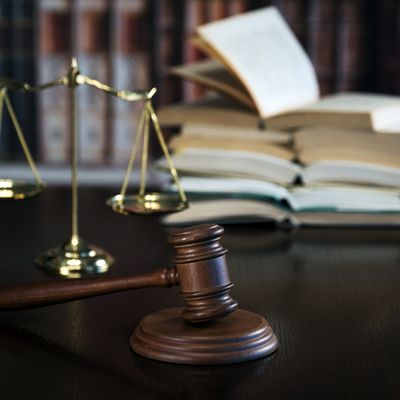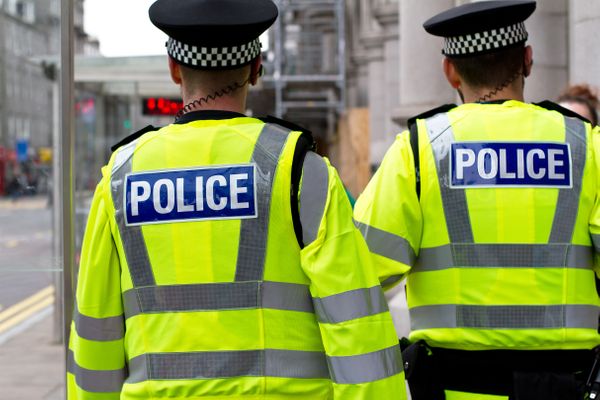10.1.3
Marxism
Marxism
Marxism
Marxists discuss the concept of criminogenic capitalism, this means that crime is inevitable in a capitalist society and all social classes are committing crime.


Box
Box
- Marxists such as Box claim that the law is written by the bourgeoisie and therefore only reflects their interests.
- This is referred to as ideological law making.


Chambliss
Chambliss
- Chambliss claims that the criminal justice system disproportionately focuses on the actions of the proletariat in order to control their actions.
- On the other hand, the bourgeoisie’s acts are ignored this is known as selective law enforcement.


False class consciousness
False class consciousness
- Marxists argue the law can be useful in maintaining false class consciousness.
- At times, the bourgeoisie will allow laws that seem to help the proletariat such as the minimum wage and health and safety regulations in the workplace.


The caring face of capitalism
The caring face of capitalism
- However, Pearce claims these laws are rarely enforced and usually benefit the bourgeoisie as a healthy and happy workforce is more productive and obedient, this is referred to as the caring face of capitalism.
Moral Entrepreneurs
Moral Entrepreneurs
Becker argues that the role of moral entrepreneurs is significant in our reaction to particular acts.


Becker
Becker
- A ‘moral entrepreneur’ is someone who attempts to influence our reaction in order to change the law.
- These are usually journalists, politicians or members of the criminal justice system.
- Moral entrepreneurs begin to influence other people’s opinions, which then in turn affects the labelling process.


Cicourel
Cicourel
- Cicourel claimed that police officers and judges use typifications or stereotypes to influence their judgement of an offender.
- If the offender fits their expectations of a typical criminal, they are more likely to arrest them.


Primary deviance
Primary deviance
- Lemert studied the difference between what he calls ‘primary’ and ‘secondary’ deviance.
- This is covered in the next module.
Labelling Theory
Labelling Theory
Lemert studied the difference between what he calls ‘primary’ and ‘secondary’ deviance.


Primary deviance
Primary deviance
- Although technically illegal the criminal label is not attached as people tend to see it as ‘primary deviance’.
- As the criminal label is not attached, it does not affect the ‘self-concept’ of the individual and a result no labelling takes place.


Secondary deviance
Secondary deviance
- An act that generates a strong response and results in a label being attached to the offender.
- After being labelled, an offender may experience consequences such as punishment or humiliation.
- This label becomes the person’s master status and therefore their controlling identity.
- This leads to the self-fulfilling prophecy and as a result more crime.


Deviance amplification spiral
Deviance amplification spiral
- Secondary deviance causes a deviance amplification spiral.
- If a moral entrepreneur changes the public perception on a particular act from ‘primary’ to secondary’ deviance, it could lead to further crime.


The media
The media
- The media become central to the deviancy amplification spiral.
- They represent the deviant group in a negative way and as a result the self-fulfilling prophecy will take hold and more crime will occur.


Braithwaite
Braithwaite
- Braithwaite suggests that labelling can be used to reintegrate offenders, rather than marginalise them.
- He refers to this process as reintegrative shaming.


Reintegrative shaming
Reintegrative shaming
- He claims ‘reintegrative shaming’ is more effective and focuses more on the act, rather than the individual.
- Braithwaite says this is more useful than disintegrative shaming that labels the criminal and outcasts them from society.
1Theory & Methods
1.1Sociological Theories
1.2Sociological Methods
2Education with Methods in Context
2.1Role & Function of the Education System
2.2Educational Achievement
2.3Relationships & Processes Within Schools
3Option 1: Culture & Identity
3.1Conceptions of Culture
3.2Identity & Socialisation
3.3Social Identity
3.4Production, Consumption & Globalisation
4Option 1: Families & Households
4.1Families & Households
4.2Changing Patterns
4.3The Symmetrical Family
4.4Children & Childhood
5Option 1: Health
5.1Social Constructions
5.2Social Distribution of Healthcare
5.3Provision & Access to Healthcare
5.4Mental Health
6Option 1: Work, Poverty & Welfare
6.1Poverty & Wealth
7Option 2: Beliefs in Society
7.1Ideology, Science & Religion
7.2Religious Movements
7.3Society & Religion
8Option 2: Global Development
8.1Development, Underdevelopment & Global Inequality
8.2Globalisation & Global Organisations
8.3Aid, Trade, Industrialisation, Urbanisation
9Option 2: The Media
9.1Contemporary Media
9.2Media Representations
10Crime & Deviance
10.1Crime & Society
10.2Social Distribution of Crime
Jump to other topics
1Theory & Methods
1.1Sociological Theories
1.2Sociological Methods
2Education with Methods in Context
2.1Role & Function of the Education System
2.2Educational Achievement
2.3Relationships & Processes Within Schools
3Option 1: Culture & Identity
3.1Conceptions of Culture
3.2Identity & Socialisation
3.3Social Identity
3.4Production, Consumption & Globalisation
4Option 1: Families & Households
4.1Families & Households
4.2Changing Patterns
4.3The Symmetrical Family
4.4Children & Childhood
5Option 1: Health
5.1Social Constructions
5.2Social Distribution of Healthcare
5.3Provision & Access to Healthcare
5.4Mental Health
6Option 1: Work, Poverty & Welfare
6.1Poverty & Wealth
7Option 2: Beliefs in Society
7.1Ideology, Science & Religion
7.2Religious Movements
7.3Society & Religion
8Option 2: Global Development
8.1Development, Underdevelopment & Global Inequality
8.2Globalisation & Global Organisations
8.3Aid, Trade, Industrialisation, Urbanisation
9Option 2: The Media
9.1Contemporary Media
9.2Media Representations
10Crime & Deviance
10.1Crime & Society
10.2Social Distribution of Crime
Unlock your full potential with Seneca Premium
Unlimited access to 10,000+ open-ended exam questions
Mini-mock exams based on your study history
Unlock 800+ premium courses & e-books